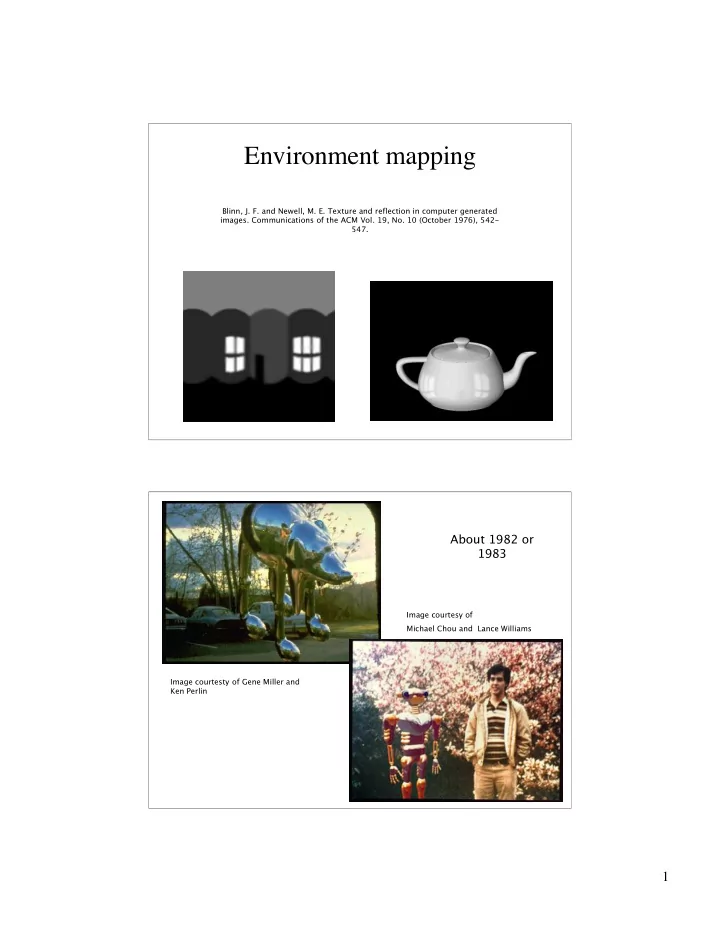

Environment mapping Blinn, J. F. and Newell, M. E. Texture and reflection in computer generated images. Communications of the ACM Vol. 19, No. 10 (October 1976), 542- 547. About 1982 or 1983 Image courtesy of Michael Chou and Lance Williams Image courtesty of Gene Miller and Ken Perlin 1
Interface by NYIT (Lance Williams) SIGGRAPH 1985 10” gazing ball 2
Environment Mapping • Spherical co-ordinates are obtained with the following equations: – theta = arctan (y/x). – rho = arccos (z/R). – R = sqrt (x^2 + y^2 + z^2) Paul Haeberli and Mark Segal. Texture Mapping as a Fundamental Drawing Primitive. Fourth Eurographics Workshop on Rendering. June 1993, pp. 259-266. 180 o fish eye 360 o Env map Images courtesy of Paul Haeberli 3
Cube Mapping • Simple math: – Compute reflection vector r – Largest abs-value of component determines which cube face • Example: r = (5, -1, 2) give POS_X face • Divide r by 5 gives (u,v) =-1/5, 2/5) – Hardware often does all the work 4
5
6
7
8
Image-based Illumination • Paul Debevec. Rendering Synthetic Objects into Real Scenes: Bridging Traditional and Image-Based Graphics with Global Illumination and High Dynamic Range Photography. In SIGGRAPH 98, July 1998. http://athens.ict.usc.edu/Probes/ 9
Acquiring the Reflectance Field of a Human Face Paul Debevec, Tim Hawkins, Chris Tchou, Haarm-Pieter Duiker, Westley Sarokin, and Mark Sagar SIGGRAPH 2000 Conference Proceedings http://www.debevec.org/Research/LS/ Credits • http://www.debevec.org/ • http://www.debevec.org/ReflectionMapping • Rosalee Wolfe 10
Recommend
More recommend